Getting to Know the Best Sushi in the World
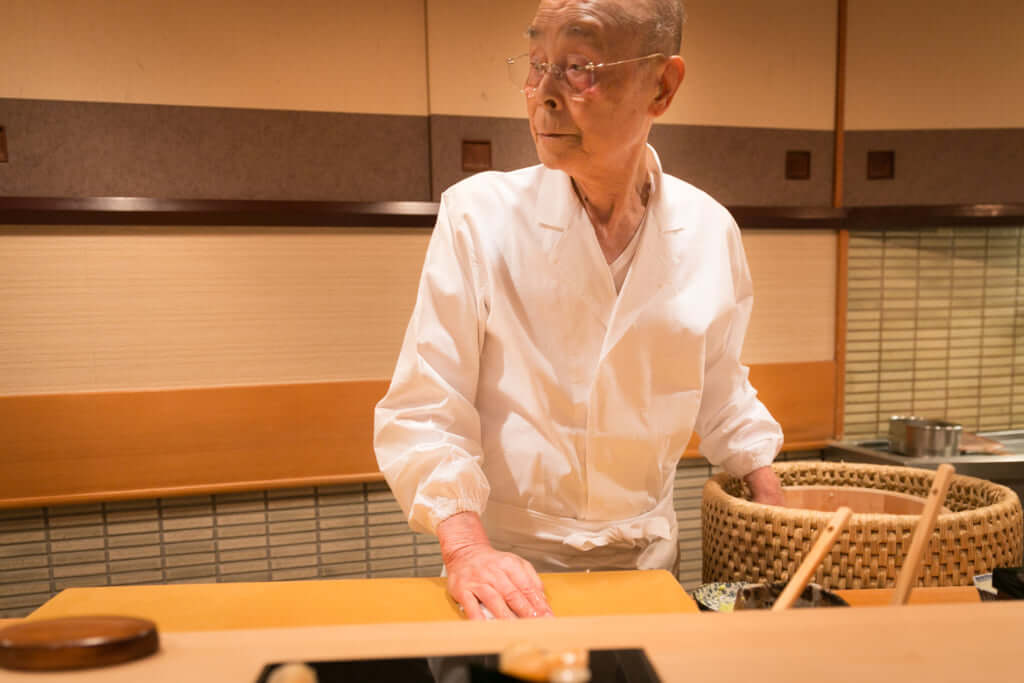
©City Foodsters
The three Michelin-starred sushi restaurant, Sukiyabashi Jiro, might be located in the classy Tokyo neighbourhood of Ginza, but guests are nonetheless obliged to descend into a metro station, take the C6 door and follow a long corridor.
It is a location that might seem off-putting, but the fact that to get a taste of this restaurant’s treasures, you’ll need to reserve months in advance proves otherwise. It is now considered a veritable national treasure with its ‘Full’ sign brandishing the door on a daily basis, having to turn away up to 10,000 disappointed diners a month.
The best sushi in the world
It is rumoured that it is here, under the blades of chef Jiro Ono, 93 years old, that the best sushi in the world is served. ‘The left-handed master Jiro Ono creates the finest sushi with fast and fluid movements’, notes Michelin’s famous red guide.
Behind the opaque windows punctuated with wooden slats, the restaurant however appears highly modest: a dozen chairs line a counter behind which the master and his son Yoshikazu, draped in their white kimonos, cook up their unique menu of 20 different sushis for just over 200 euros.
This is luxury that lies a long way from ostentation and glitz, where, alongside Tokyo gourmets or curious travellers, you’ll find the greatest names in global gastronomy: Alain Passard, Massimo Bottura, Joel Robuchon, Rene Redzepi and Alain Ducasse. Barack Obama, then still president of the United States, even shared a meal with the Japanese Prime Minister Shinzo Abe at Jiro Ono’s establishment in 2014. All of these guests have had the privilege of sitting on these stools and tasting these tastefully prepared dishes composed of fresh fish sourced just a few hours previously at the Tokyo fish market, formerly located in Tsukiji.
Guardian of Japanese traditions
Sole, sea urchin, eel, tuna and cuttlefish all feature on the menu in various combinations designed to delight diners taste buds. However, be warned, the master sushi might not impose a dress code on his visitors, but that’s not to say it’s a rule-less residence. He respects the Japanese tradition from the Edo period of (1603-1868), according to his website, ‘sushi originated as casual food served at food stalls in the Edo era… customers would quickly eat the sushi with their hands, then drink some tea, wipe their hands on the noren curtain, and depart the food stall’. He equally reminds guest that ‘conversing during the meal and sharing sake together, while fundamental to the origins of restaurants and pubs, is not customary to sushi houses’.
At Sukiyabashi Jiro, service follows a precise rhythm, dishes are tasted in silence and sake glasses are replaced with cups of tea, according to Jiro Ono, ideal for ridding the palate of any aftertaste before continue tasting.
Finally, note that you won’t find any soy sauce on the counter. The sushi is pre-seasoned with nikiri soy sauce in a subtle way so as not to distort the taste of the vinegar, rice or the fish. You won’t find the slightest trace of ginger or wasabi either.
The chef equally prohibits cameras at his sushi temple. ‘The only sure way of enjoying Jiro’s sushi is to concentrate on dining. When you leave, we would be pleased to take a commemorative photograph for you at the doorway if you wish…’
It’s a tasteful formula that promises an experience that is both extraordinary and unforgettable.
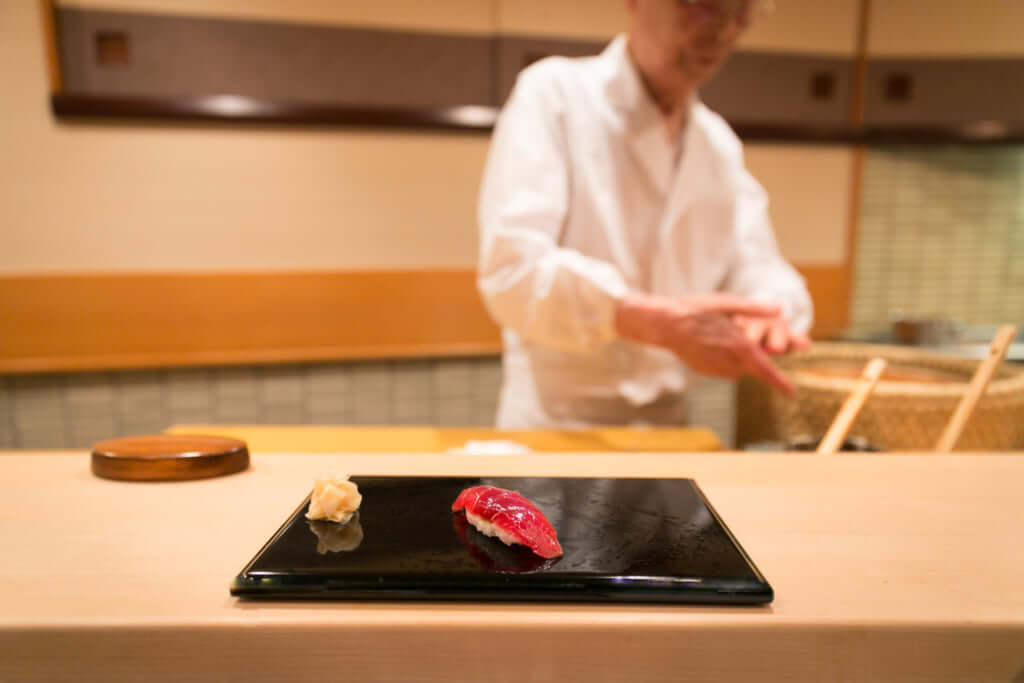
©City Foodsters
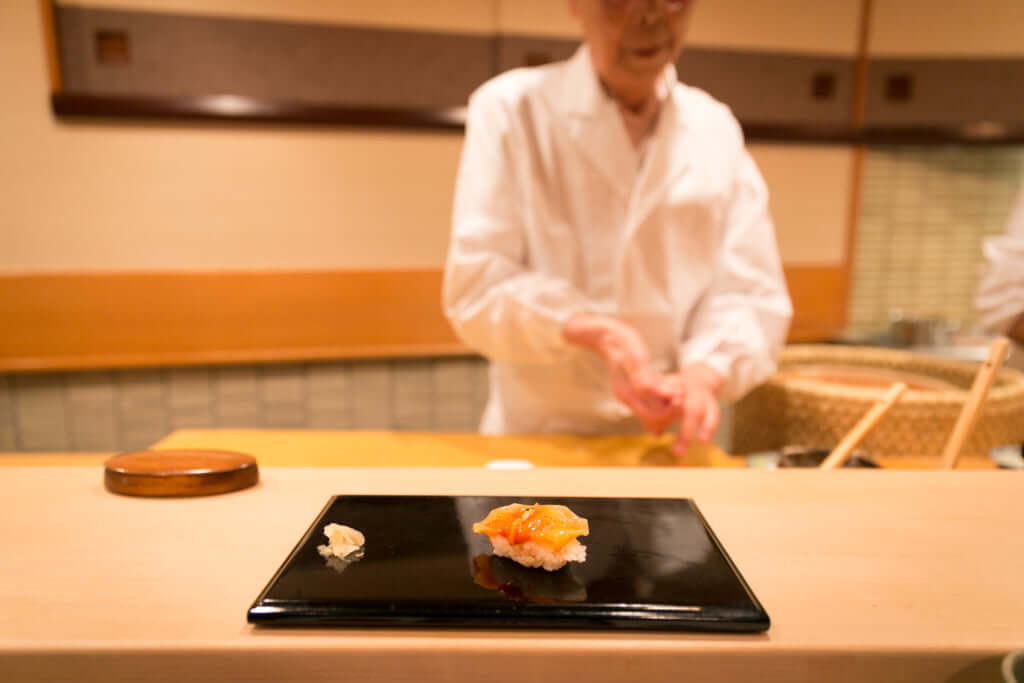
©City Foodsters
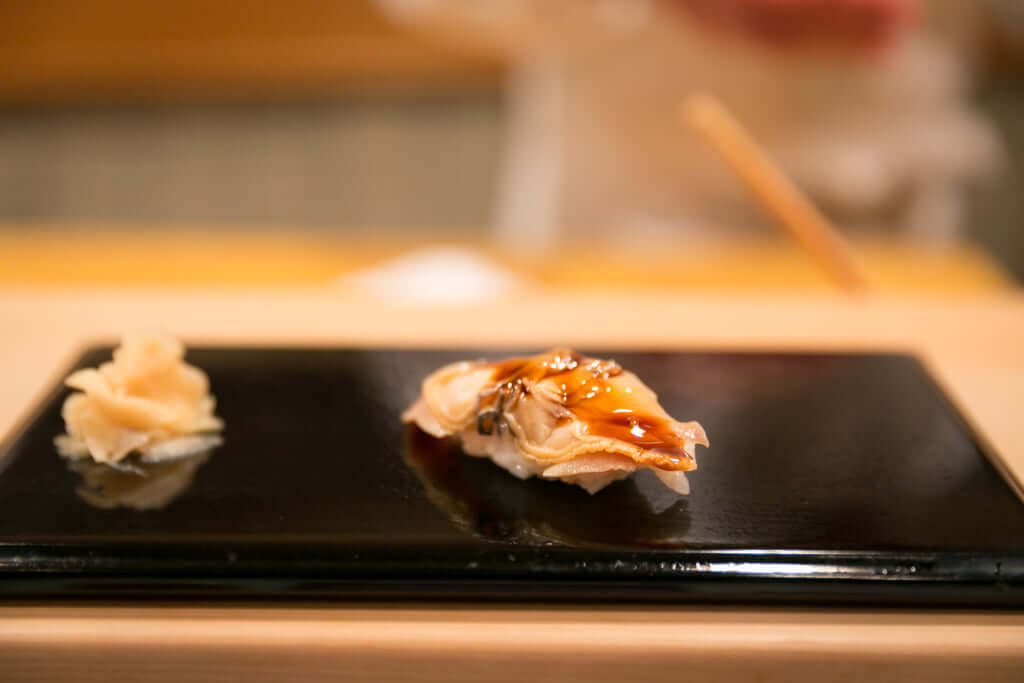
©City Foodsters
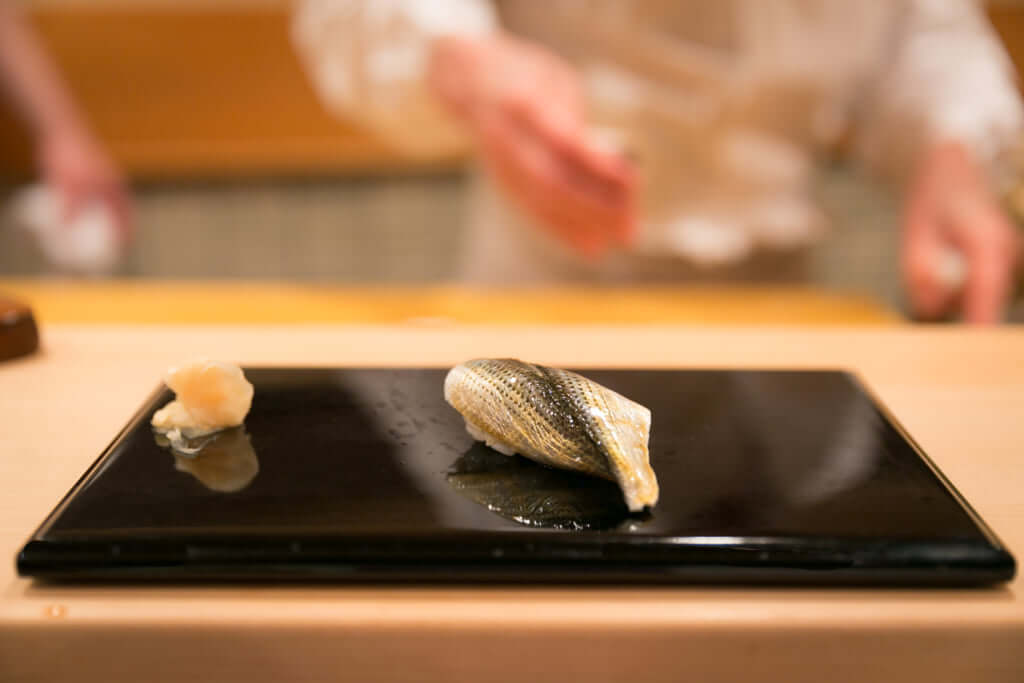
©City Foodsters
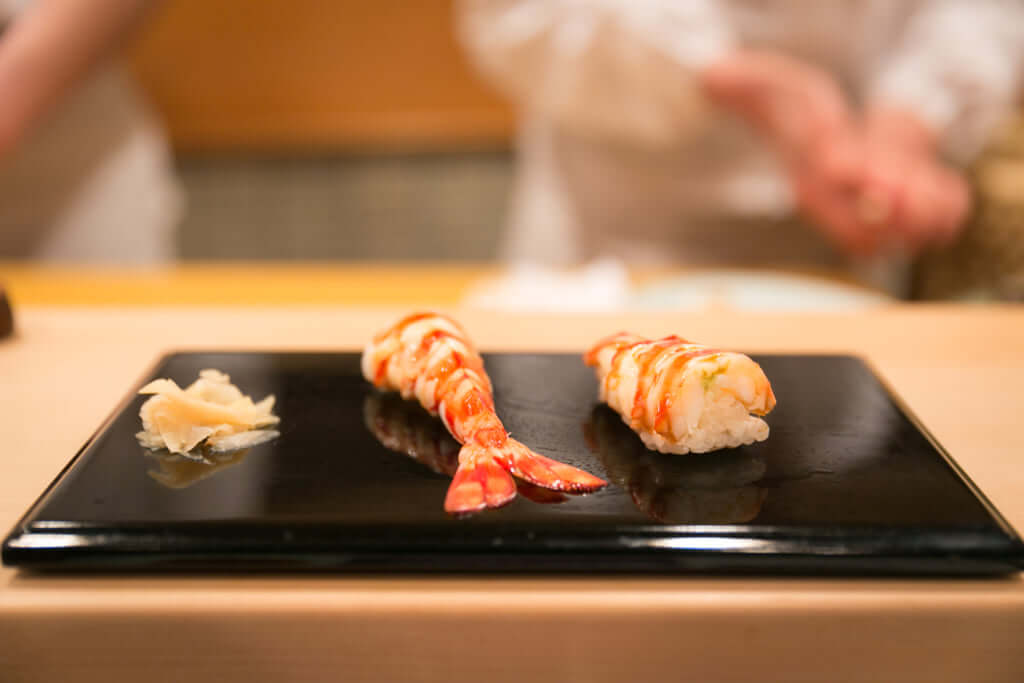
©City Foodsters
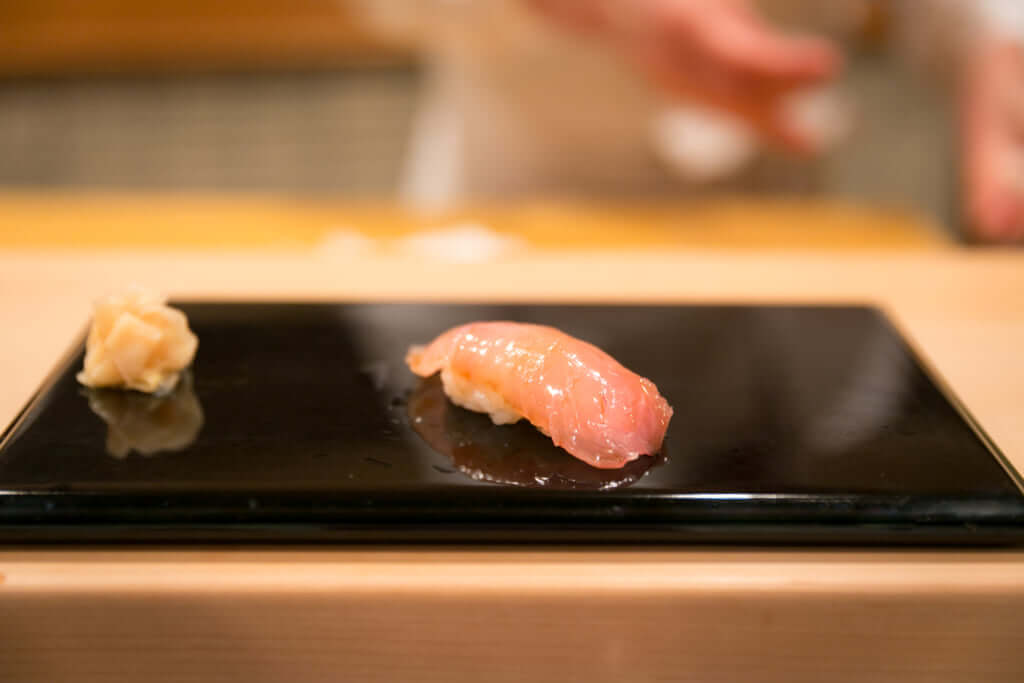
©City Foodsters
Sukiyabashi Jiro
4-2-15 Ginza, Chuo-ku, Tokyo 104-0061
TRENDING
-
A Rare Japanese Garden Hidden Within Honen-in Temple in Kyoto
Visible only twice a year, ‘Empty River’, designed by landscape architect Marc Peter Keane, evokes the carbon cycle.

-
Modernology, Kon Wajiro's Science of Everyday Observation
Makeup, beard shape, organisation of cupboards and meeting places: all of these details decipher 1920s Tokyoites.

-
Colour Photos of Yakuza Tattoos from the Meiji Period
19th-century photographs have captured the usually hidden tattoos that covered the bodies of the members of Japanese organised crime gangs.

-
Recipe for Ichiraku Ramen from ‘Naruto’ by Danielle Baghernejad
Taken from the popular manga with the character of the same name who loves ramen, this dish is named after the hero's favourite restaurant.

-
Hitachi Park Offers a Colourful, Floral Breath of Air All Year Round
Only two hours from Tokyo, this park with thousands of flowers is worth visiting several times a year to appreciate all its different types.





